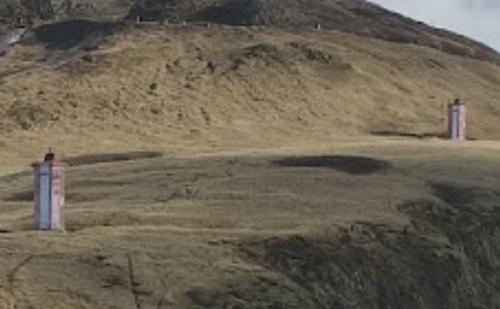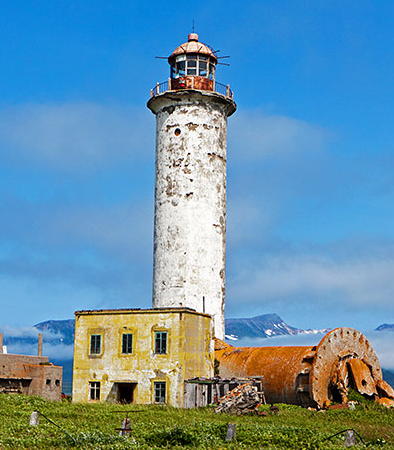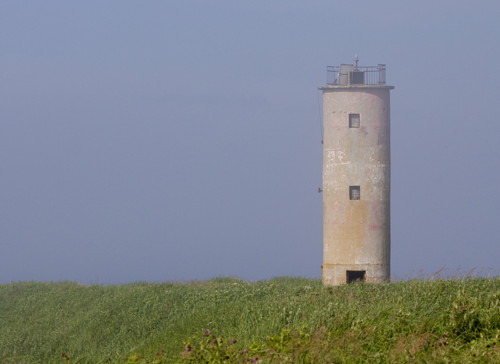Russia (Россия, Rossiya in Russian) is by far the world's largest country, spanning a little over 150° in longitude. It is organized as the Russian Federation (Rossiyskaya Federatsiya) with members known as federal subjects (sub'yekty federatsii). Russia is primarily a continental nation but it has important coastlines on the Baltic, Black, and Caspian Seas and very long coastlines on the Arctic Ocean and North Pacific Oceans. To guard these coasts it operates hundreds of lighthouses, many of them historic.
The Kuril Islands are a chain of 56 volcanic islands 1300 km (800 mi) long, stretching from the northern Japanese island of Hokkaido to the tip of the Kamchatka Peninsula and separating the Sea of Okhotsk from the open Pacific Ocean. The islands are thinly populated, having about 19,000 citizens. They are included with the much larger island of Sakhalin in Sakhalin Oblast, one of the members of the Russian Federation.
The history of the Kurils is complex, reflecting a lengthy struggle between Russia and Japan to control these northern territories. In 1855 the two nations agreed in the Treaty of Shimoda that the border between them should fall between the islands of Iturup and Urup. In 1875, in the Treaty of St. Petersburg, Russia gave Japan control of all of the Kurils in return for Russian control of Sakhalin.
During World War II, in the Yalta Agreement of 1943, the Allied Powers agreed that following the war Japan should cede all of the Kurils to the Soviet Union. In the last days of the war, in 1945, Soviet troops occupied the Kurils. In the 1951 Treaty of San Francisco Japan renounced its claims to Sakhalin and the Kurils. However, an independent Japan subsequently declared that this renunciation does not apply to the southern Kurils that were recognized as Japanese back in 1855. In 1956 the Soviet Union offered to return the southernmost Kurils, Shikotan and the Habomai Islands, if Japan would drop its claims to the rest of the chain, but Japan refused, maintaining its claim to Kunashir and Iturup as well. Russia repeated this offer in 2006 but the dispute continues.
Curly braces {} enclose the former Japanese names of some of the lighthouses. The Kurils are called the Chishima Islands in Japan.
The Russian word for a lighthouse is mayak (маяк); ostrov is an island, poluostrov is a peninsula, kosa is a sandy spit, rif is a reef, mys is a cape, bukhta is a bay, zaliv is a larger bay or gulf, proliv is a strait, reka is a river, and gavan' is a harbor.
Russian lighthouses are owned by the Russian Navy and maintained by the Office of Navigation and Oceanography (Управление навигации и океанографии).
ARLHS numbers are from the ARLHS World List of Lights. Admiralty numbers are from volume M of the Admiralty List of Lights & Fog Signals. U.S. NGA List numbers are from Publication 112.
- General Sources
- Маяки Дальневосточных морей (Lighthouses of the Far Eastern Seas)
- This site has historical information (in Russian) on the major lighthouses.
- Russian Lighthouse Society
- Photos and information on many lighthouses.
- World of Lighthouses - Far East of Russia
- Photos by various photographers available from Lightphotos.net.
- Online List of Lights - Kuril Islands
- Photos by various photographers posted by Alexander Trabas.







